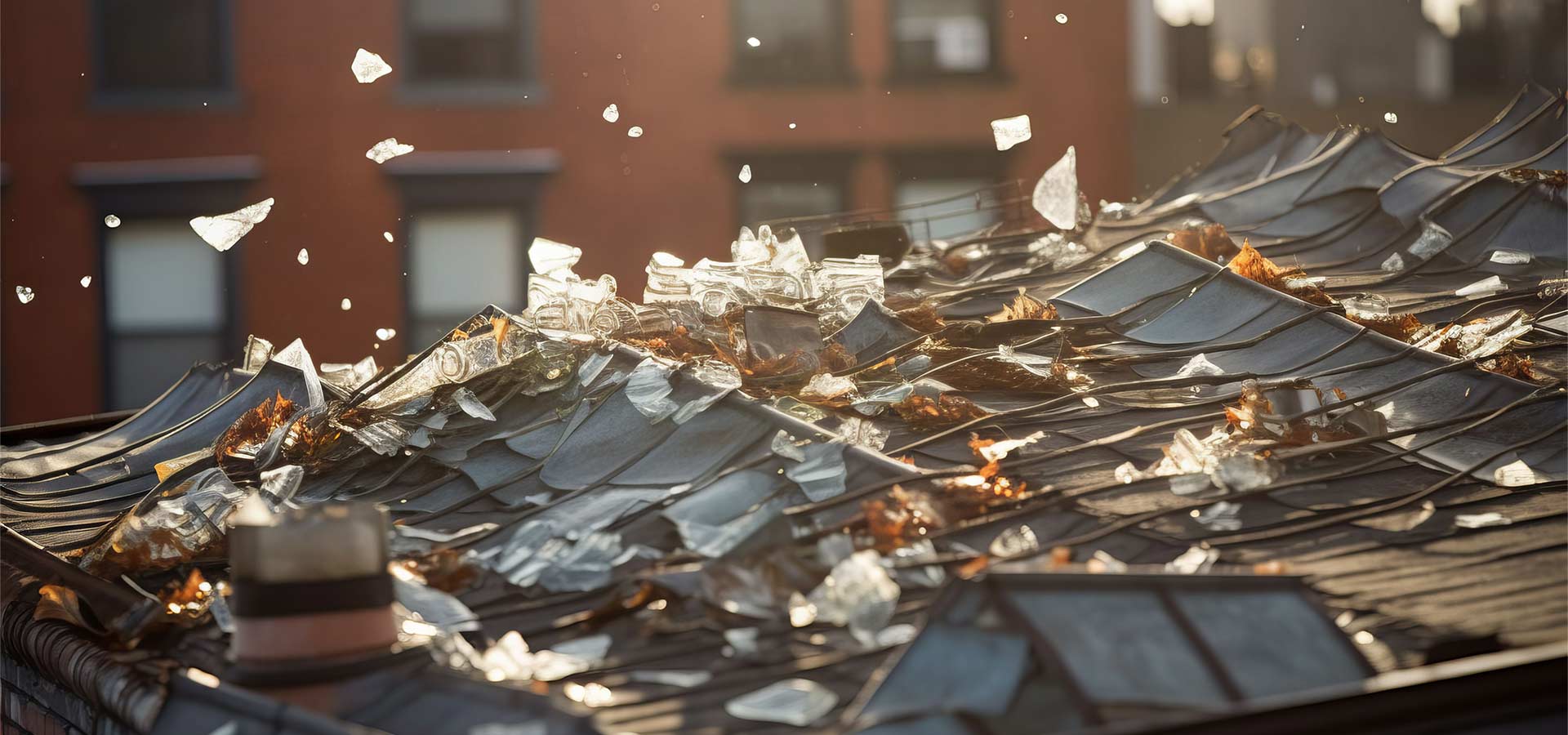New York is no stranger to harsh weather conditions, and your roof takes the brunt of these storms. Whether it’s heavy snowfall in the winter, thunderstorms in the summer, or high winds throughout the year, New York weather can take a toll on your roof. It’s crucial for homeowners to know how to spot roof damage after a storm, so they can address any issues promptly and avoid more costly repairs in the future. At Smart Roofers NY, we provide a comprehensive range of roofing services to help maintain your roof’s integrity and increase its longevity.
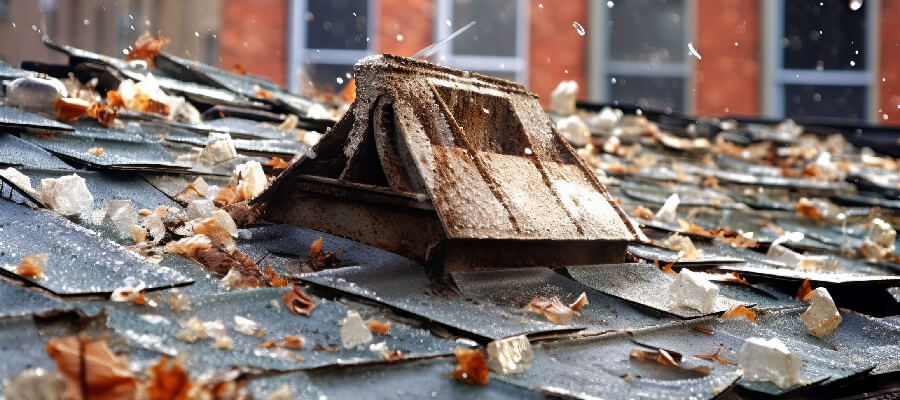
Identifying Different Types of Roof Damage
Different storms can cause various types of roof damage. Here are the most common types you should be aware of:
Shingle Damage: Shingles are the first line of defense for your roof. After a storm, inspect for missing, cracked, or buckling shingles. If your shingles roof shows these signs, it might be that time for a roof replacement or repair.
Structural Damage: Severe storms can cause visible structural damage like sagging or roof leveling issues. These signs might require immediate professional attention.
Water Damage: Leaks or water spots on your ceiling could indicate a compromised roof. If not addressed promptly, this can lead to more serious issues, such as mold growth.
Damage to Roof Features: Always check your roof’s features, like skylights, chimneys, and vents, for cracks or leaks.
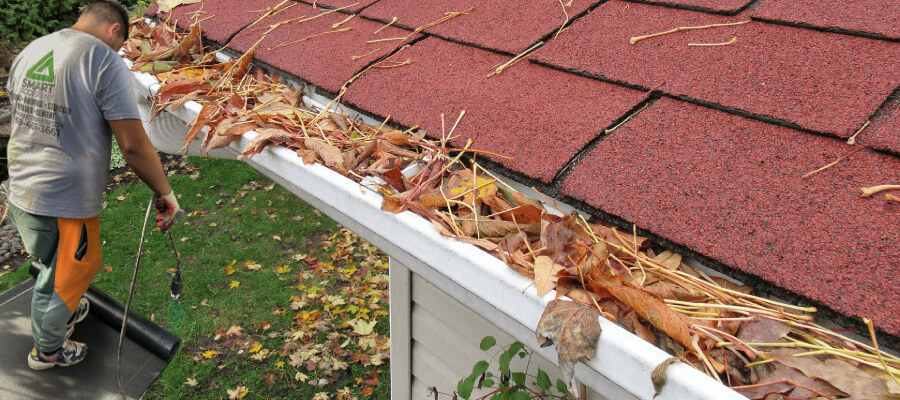
Post-Storm Roof Inspection Checklist
Here’s a straightforward checklist that homeowners can follow after a storm:
- Examine the Attic: Look for signs of leaks or water damage. Moisture or discolored patches on the ceiling or walls are red flags.
- Inspect the Gutters: Check if your gutters are clogged with debris or if they’re sagging or detached from your house. Gutters are essential for directing rain away from your roof and foundation.
- Look for Loose or Missing Shingles: Missing shingles can expose your roof to further damage. Loose shingles can be a sign of a weakened roof structure.
- Assess the Condition of Chimneys, Vents, and Skylights: Any damage to these features can lead to leaks.
- Check for Debris: Large debris like tree branches can cause significant roof damage. Even smaller debris can trap moisture and lead to problems down the line.
- Evaluate Your Home’s Exterior: Water stains could indicate that your roof’s drainage system isn’t working correctly.
If you notice any signs of damage or are unsure, it’s advisable to contact a professional roofing contractor like Smart Roofers NY to conduct a thorough inspection. It’s essential to remember that climbing on your roof can be dangerous, especially after a storm, and is best left to professionals.
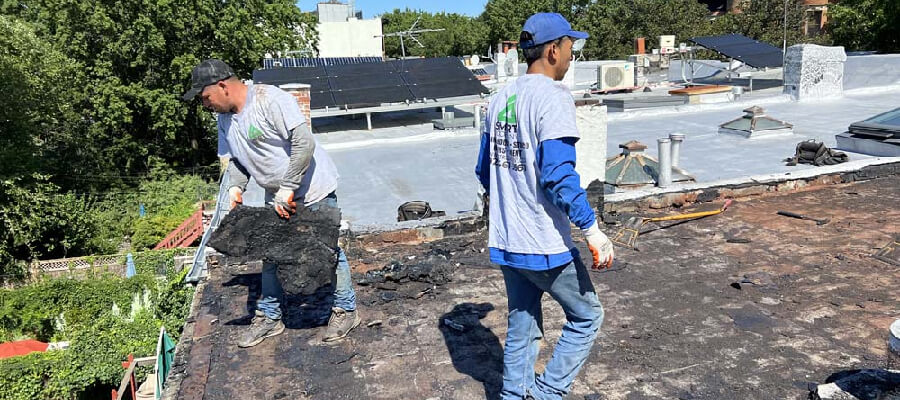
When to Contact a Roofing Professional
It’s essential to act promptly if you’ve identified potential damage after a storm. Our team at Smart Roofers NY can help assess the damage and guide you through the roof repairs and insurance claims process.
Remember that preventive measures can also save you from costly repairs or replacement. Regular maintenance and annual inspections can help identify potential problems before they escalate. If you’re considering a roof replacement, it’s worth exploring different types of roofing systems that may be more resistant to weather damage. For example, EPDM roofing is known for its durability and weather resistance, making it an excellent choice for New York homes.
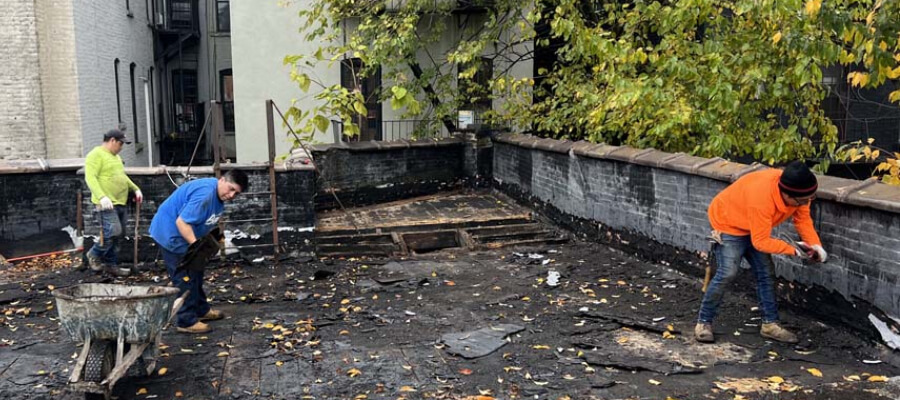
Preventive Measures and Regular Maintenance
Beyond spotting damage after a storm, homeowners can take several preventive measures to protect their roofs:
Regular Inspections: Schedule regular roof inspections with a professional. They can spot potential issues before they become significant problems.
Trim Overhanging Branches: Overhanging tree branches can cause damage during a storm. Regularly trimming these can prevent potential damage.
Clean Gutters and Downspouts: Keep your gutters and downspouts clear of debris to ensure proper water drainage, preventing water damage.
Consider Installing Impact-Resistant Roofing Materials: Brooklyn is a city prone to severe storms; consider installing impact-resistant roofing materials like roof pavers to minimize damage.
Green Roofing: Green roofing not only benefits the environment but also adds a significant layer of insulation and protection to your home.
Remember, the cost of regular maintenance is often much less than the cost of major repairs or a new roof. Consult our guide on how much a new roof costs in Brooklyn, NY, for more detailed information.
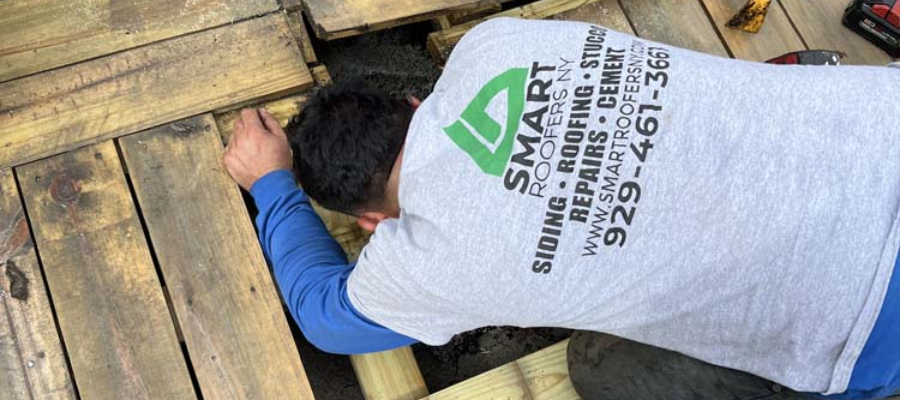
Frequently Asked Questions
 How do I know if a storm damaged my roof?
How do I know if a storm damaged my roof?
Inspect your roof after a storm for signs of damage. This includes missing or cracked shingles, sagging sections, leaks, and water damage inside your home. Also, check for damage to roof features like skylights, chimneys, and vents. If you notice any issues, it’s essential to contact a professional roofer promptly.

What does a damaged roof look like?
A damaged roof can exhibit several signs. You might see missing or broken shingles, curling or buckling shingles, damaged flashing, sagging areas, and granules in the gutters. Inside your home, signs of a damaged roof may include water stains on the ceilings or walls, mold growth, and a musty odor.
 How do I know if my shingles have storm damage?
How do I know if my shingles have storm damage?
Storm-damaged shingles may be missing, broken, cracked, or buckling. You might also see loss of granules, which often collect in gutters. If a large number of shingles are damaged or missing, it can expose the underlayment or decking to further damage.
 How do you mark wind damage on a roof?
How do you mark wind damage on a roof?
Wind damage on a roof is typically marked by missing shingles, as wind can rip shingles off the roof. You might also see curling at the edges of shingles, allowing water to seep underneath. If you’re inspecting your roof after a windstorm, use chalk to mark areas where you see these signs of damage.
 What should I look for when checking a roof?
What should I look for when checking a roof?
When inspecting a roof, look for missing or damaged shingles, sagging areas, damaged flashing, and signs of water damage like stains or mold growth inside your home. Also, check your gutters for granules, which can indicate that your shingles are deteriorating.
 What damages a roof the most?
What damages a roof the most?
Several factors can cause significant roof damage. This includes severe weather conditions like wind, rain, snow, and hail. Over time, exposure to sun can also degrade roofing materials. Additionally, poor maintenance, debris accumulation, and biological growth (like moss and algae) can lead to roof damage.
 What is the weakest part of a roof?
What is the weakest part of a roof?
The weakest part of a roof is typically where features intersect with the roof itself, such as around chimneys, skylights, vents, and where two roof planes meet (valleys). These areas are vulnerable because they allow water to seep if improperly sealed.
 When should I worry about my roof?
When should I worry about my roof?
You should be concerned about your roof if you notice signs of damage such as missing or damaged shingles, sagging sections, leaks or water stains inside your home, or an unusually high amount of shingle granules in your gutters. Other warning signs include a roof that’s over 20 years old, visible mold or moss growth, or if you see light through the roof boards in your attic. Contact a professional roofer for an inspection if you notice any of these signs.
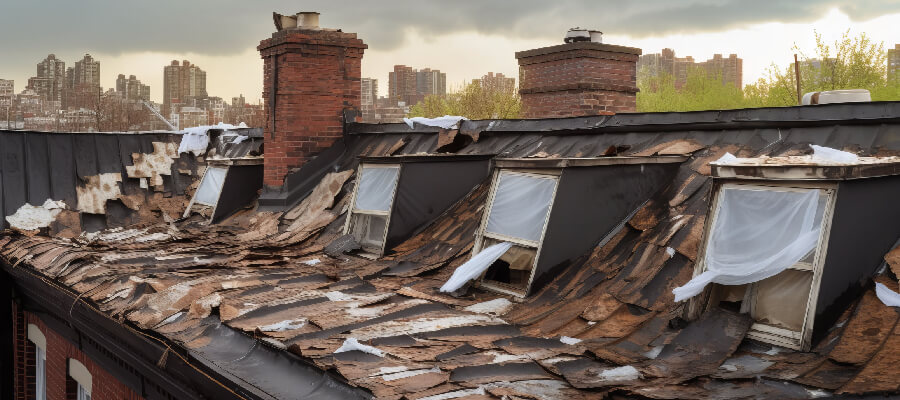
Conclusion
The key to maintaining the longevity of your roof lies in regular inspections, prompt repairs, and preventive measures. Knowing how to spot roof damage after a New York storm can save you from severe damage and costly repairs down the line.
For more detailed information, you can check out our NY Roofer Guide FAQs. If you have spotted signs of damage after a storm, or need professional help for an inspection, don’t hesitate to contact us at (929) 491-3661. Our team at Smart Roofers NY is always ready to help ensure your home stays safe and secure, no matter the weather.
